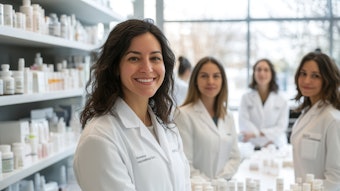
In a 2019 study, BrightEdge, a search engine optimization (SEO) research company, found that 68% of all trackable website traffic comes from organic and paid search, vastly exceeding all other channels, including display ads and social media. Of that 68%, 53% was attributed to organic search, while paid search was responsible for 15% of it.
This is why savvy business leaders continue to invest in SEO and paid search advertising, while also increasing their site’s visibility and relevancy to users.
Following are some strategies and tools that can increase your website’s organic and paid traffic. Use them together or individually to improve your website’s visibility, ranking and views among your target patient base.
How to Increase Organic Traffic
Consumers perform more than 3.5 billion Google searches per day (Internetlivestats, 2019), which equates to roughly 40,000 search queries every second. This is why having an online presence and taking steps to capture some of that search traffic is so beneficial to practices and medspas.
Here are some of the most reliable ways to drive organic website traffic:
Create Quality Content. Keeping your site updated with relevant and new information gets attention from search engines. Google appreciates websites that regularly update their content to facilitate visitors and rewards those sites with higher rankings in search results.
Leverage the Right Tools for Keyword Research. SEO is data-dependent. Therefore, the more metrics and data you track and analyze, the greater your chance of success. There are a variety of SEO tools that can help you with keyword research, competitive analysis and content creation. Also, invest in affordable backlink tools. These will help with your SEO.
Use Long-Tail Keywords. Long-tail keywords are specific phrases that people are more likely to use when searching for products or services. The recent development of the Google BERT algorithm has allowed Google to comprehend long-term queries and show related outcomes on the search engine result pages.
For example, a prospective patient who has a specific concern and is seeking care is more likely to search “How to get rid of jowls and brown spots” than “laser skin resurfacing,” “Botox” or “facelift.”
Identifying your business’s long-tail keywords and using them in titles, procedure descriptions or blog post teasers can help boost your ranking in organic Google searches. They are even more beneficial when it comes to paid advertising campaigns, since there is less competition for these more specific phrases (more on that below).
Boost Your Content with On-Page Optimization. If you want more organic traffic, SEO and content are an integral part of this effort. On-page optimization includes: using your targeted keywords sparingly and naturally; creating exciting and eye-catching titles; and optimizing your URLs to include your target keywords.
A couple of notes on keywords and URLs. While you do want to include your keywords in your URLs, you also want to keep the URL as concise as possible. It also is better to use your keywords in introductions (teasers or first lines of copy), rather than trying to fit them into every title.
Content creation and SEO are time-consuming processes—it can take several months to rank your website organically, as you compete against other websites that have been around for longer. But as your SEO improves, it will continue to push your site higher and higher in the rankings over the long term.
As mentioned above, 15% of website traffic comes through paid search—which is not an insignificant number of visitors. Therefore, aesthetic practices and medspas are wise to supplement their SEO efforts with paid search opportunities.
Continue reading to learn more on how to gain paid traffic to your site in our Digital Magazine...
Originally a pre-med student, Vahe Tirakyan had dreams of becoming a plastic surgeon. But once he started working in the industry, he realized there was a need for good business leadership in the medical field, especially in privately owned practices. He is CEO of MD Logica, a practice management consultancy, as well as a speaker and author covering business, marketing and strategy. Contact him at [email protected].











